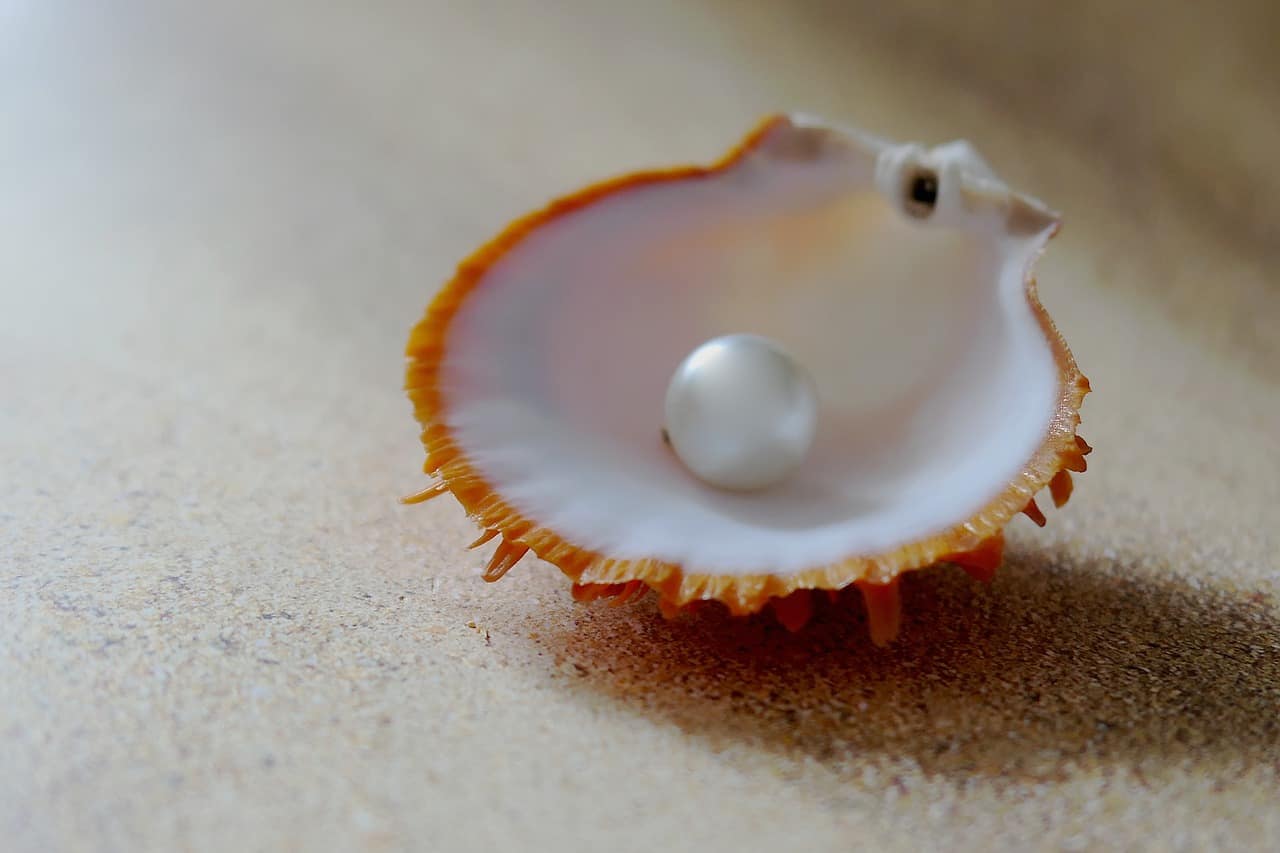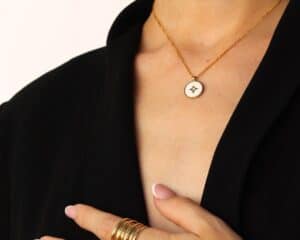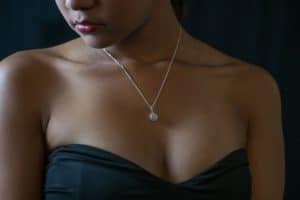Pearls are also known as the gems of the sea. Authentic pearls are valuable gemstones created by mussels, oysters and several other bivalve mollusc varieties present in the ocean and present various benefits to the wearer. At the same time, fake pearls are made up of ceramic, glass or plastic shells to look like real pearls.
From investment perspective, Pearls are an intelligent investment, and they have made a massive come-back not just in affluent auctions but also amidst the eco-conscious gemstone lovers. Pearls that have a unique origin and are rare, can fetch enormous value. However, before investing in pearls, you must understand if they are authentic. Also, always check the durability and quality to get a better value for money.
This is why it is imperative to understand how to buy authentic pearls to get all the benefits of these gemstones.
Are pearls a good investment?
Yes, good quality natural pearls can be a good investment, provided you know what you are buying and how to take care of it. While pearls do not multiply in value like gold or diamond, they can retain their original worth when handled with care and stored accurately. Pearl jewelry has elegant and lasting designs that can be handed down over many generations. If taken care of, they may also be resold at auctions and exhibitions.
This is because pearls have been the most precious gemstones since ancient times, and they possess an extensive range of worth from merely a few dollars to hundreds and thousands of dollars. Also, good-quality natural pearls are amongst the most high-priced ones and can be an excellent investment if you research them accurately and purchase them discreetly. This is because unnatural and inferior quality pears may degrade or wear out over time.
Moreover, the magnificence and variety of elegant natural pearls remain breathtaking and alluring forever and never lose their charm.
Do natural pearls have a resale value?
Both, natural and cultured pearls hold a good resale value. The resale value of pearls depends on their quality and durability. Hence it might not be wrong to say that the higher your pearl quality, the more valuable it is. The worth of a pearl gets defined by various factors. Natural pearls are rare pearl types coming from the ocean and are more high-priced than cultural pearls.
Apart from this, the resale value of a pearl also depends on various factors that include:
- Cast: Pearls come in several shades, and pure white pearl usually has a better resale value.
- Form: Entirely round pearls have a higher resale value.
- Size: Bigger pearl gems get more resale value than smaller pearls.
- Type: South Sea pearls, the most expensive pearl variety, get the most high-priced resale value in the market.
- Radiance: The more radiant a pearl illuminates, the higher its resale value.
- Surface condition: Pearl surface impurities reduce their resale value.
THE USEFUL LIFE
Do real pearls fade?
Yes, real pearls fade over time. Many people who purchase pearls are unaware that real pearls change their color with time and fade gradually. Also, white pearls slowly turn yellow when they start ageing. Now you might be thinking, why does this happen?
This is because, like several things in life, genuine pearls also age. As these valuable gems age, they pass through a natural ageing process that alters the structure of the organic elements that make them up. This is what causes pearls to fade or change their color.
Apart from this, pearls that fade or turn yellow indicate a genuine pearl as artificial or fake pearls do not fade or change their color.

Do real pearls fade and lose their luster if not worn?
Yes, it is utterly natural for genuine pearls to fade with time especially if not worn. As they move through a normal ageing process where they turn yellow with time. However, pearls remain in good shape if worn regularly. This is because they come in contact with natural oils and moisture from the skin. It keeps them in good shape.
Moreover, pearls lose their luster and gradually begin fading as they dry out due to a lack of moisture and air circulation. Hence, it must not be wrong to state that this gemstone can start drying out and lose its luster if not worn for a long time.
Apart from this, if you store pearls in a place with less or no moisture, they can begin fading. Therefore, if you want to keep your pearls from fading or drying out, you must wear them often. This is because the contact of pearls from your skin presents them with inherent oils that pearls absorb to remain moisturized.
On thing to consider before purchasing pearls is, you must note that while white pearls fade with age, there are also naturally yellow pearls that hold a yellowish shade right from the time they get cultivated.
How long do cultured pearls last?
Cultured pearls can last a lifetime! It depends on how well you care from them.
In order to understand how long do cultured pearls last, we must initially understand what precisely are cultured pearls. Cultured pearls are quality pearls created with the help of a pearl farming method. However, they are still 100 percent authentic pearls and are more popular than natural pearls.
They are the classification of a pearl cultivated in freshwater or saltwater after adding an irritant into the oyster pod by a pearl cultivator.
This process is the same as natural pearls creation, and hence cultured pearls also get recognized as genuine pearls. Now, when speaking of how long cultured pearls last, you must note that according to the Mohs Hardness Scale, Pearls get a ranking of 2.5.
This indicates that they are soft gemstones that can readily get scratched or deform. However, if you exercise adequate care, your cultured pearls can last for a lifetime and can look flawless even after 50 years.
How long do natural pearls last?
Pearls are perhaps the most beloved gemstones of all times, and it has grown immensely popular given its beauty and benefits. Natural pearls get formed in the water bodies without any human intervention and hence the most valuable variety of pearls that lasts for a lifetime.
Here is a tabular representation of types of natural and cultured pearls with their useful life.
Pearl Name | Type (Cultured/Natural) | Useful Life |
South Sea Pearls | Cultured | 3 to 14 years |
Tahitian Pearls | Cultured | Tahitian pearls can last for decades |
Akoya Pearls | Cultured | Akoya Pearls usually remains useful for a lifetime |
Rainbow Lipped Pearls | Cultured | 30 to 50 years |
Baroque Pearls | Natural | Baroque Pearls lasts for generations |
Keshi Pearls | Natural | Keishi Pearls remains useful for more than a decade |
Freshwater Pearls | Natural | 2 to 7 years |
What can you do with old pearls?
Real pearls are valuable gemstones that never lose their charm. Instead of discarding these aged precious gemstones, there are several ways to use these pearls.
- The initial thing to do to your old pearls is to get them polished to help them regain their radiance.
- You may get them crafted into a different piece of jewelry if you are bored of wearing them the same way, e.g. you may get your necklace remade to a charms bracelet.
- You can also use your old pearls to make a piece of earrings that will give you a timeless vintage look.
- Depending upon the number of pearls, you may get them made into different necklaces like collared necklace, bunched necklace etc. You may check for other options available with your jeweler.
- You may get them sewed into hair accessories or bags.
- They may also be used on arms and collars of cloths.
- If your pearls are not too worn out, you can get a higher resale value or get your old pearls exchanged.
STORE OF VALUE
Do real pearls hold their value?
Real pearls will hold their value if they are well cared for while wearing and when in storage If genuine pearls will retain the value or not will depend on various factors that include:
- Pearl size
- Type
- Shade
- Surface condition
among others.
Also, you must understand that a real pearl holds more worth than natural pearls and approximately costs around $300 to $1500, depending on the factors mentioned.
Apart from this, real pearls are rare and usually last for a lifetime. Moreover, there are more than six types of natural pearls, considered the most expensive gemstones due to their durability and lustre.
Hence there is no denying that genuine and natural pearls hold their value for a lifetime if you take proper caution while wearing them and store them carefully. This implies that when you buy pearls, you can have them for a lifetime to pass them on to your coming generations.
Do pearls lose their value over time?
Yes, pearls may lose their value, but not always! While there may be reduction of 25-30% in the value if your pearl is not in good shape, they may also lose complete value if there are scratches and they discolor. Having said that, you may also resell them at the same or even increased price if they are in good shape.
In order to maintain the value, you need to:
- Keep them well hydrated
- Prevent them from scratches
- Prevent discoloration
Pearls usually come in two varieties that include:
- Natural pearls
- Cultured pearls
When comparing both these pearl qualities, natural pearls rarely lose their value with time. On the other hand, cultured pearls like South Sea pearls may start losing their worth after some time.
If you do not take proper care of your gemstone, even natural pearls can lose their charm and value over time.
How much are old pearls worth?
Pearls are one of the most ancient gemstones, and real pearls usually last for eternities. Some natural pearls originate from saltwater lakes and are known to be the oldest pearls.
Worth of old pearls, as already discussed, depends on:
- Where you are selling them: Your jeweler might not give you the best choice. However, if they are really old, you may get a good price at an auction or exhibition.
- If there are any scratches on the surface: Pearls with smooth surface can be resold. It my be difficult to find buyers for scratched pearls
- Shape of the pearl: What is the shape of the pearl and how well it is retained also determines the worth of pearls.
- If there are any signs of decay: Are their any spots or signs of decay on the surface
- If they are crafted into a piece of jewelry: The worth will also depend on if a pearl is into a piece of jewelry. E.g., if a pearl is mounted in a ring, the metal and design of the ring will also effect it’s worth. Worth of a pearl bracelet will also depend on how elegant the design is and what kind if string is used.
Below-mentioned is a table to help you better understand the worth of pearls.
Pearl Name | Type (Cultured/Natural) | Useful Life and Depreciation | Cost of New strand of pearls |
Tahitian Pearls | Cultured | Tahitian pearls usually last for a lifetime. However, if you do not exercise proper care, it can start depreciating in its value. | $500-$25000 |
South Sea Pearls | Cultured | These pearls last for 3 to 14 years and gradually start depreciating after this period. | $1000-$10000 |
Akoya Pearls | Cultured | Akoya Pearls usually remains useful for a lifetime | $1000-$10000 |
Baroque Pearls | Natural | Baroque Pearls last for a lifetime. However, it can start depreciating if not stored accurately. | $150-$8000 |
Freshwater Pearls | Natural | Freshwater pearls last for 2 to 7 years and can start ageing and losing their value after 7 years. | $50-$300 |
However, if you feel you are not getting the desired worth for your pearls, you may give them away as a gift to someone who adores or values pearls. You may also get them crafted into a different design or piece of jewelry and wear them.
Conclusion
Most pearls, if taken care of, stay in shape. They can easily be handed down over generations. If you are buying pearls from investment perspective, it is imperative to know what kind of pearl you are buying. This will help you figure out if they will have re-investment value in future.




